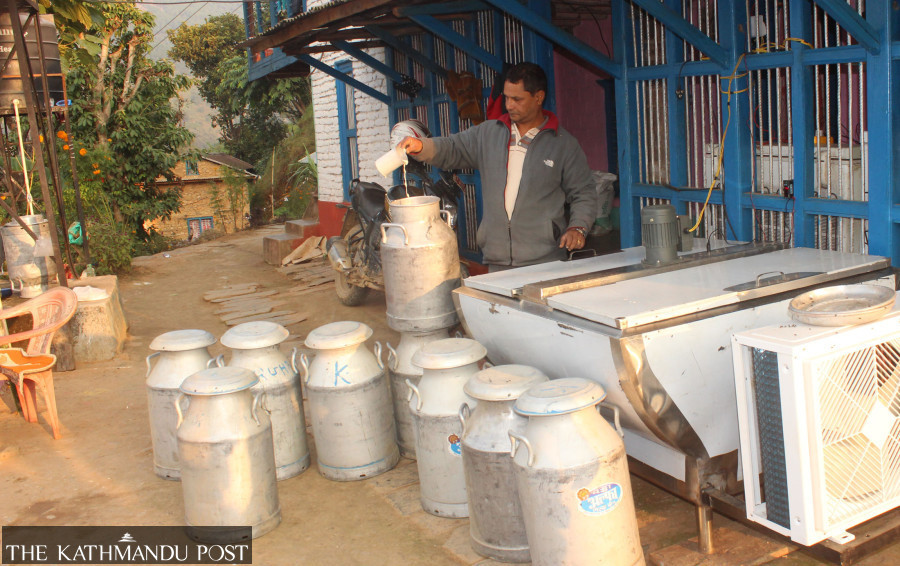Editorial
Dairy farmers’ distress
Farmers haven’t been paid their dues as domestic daily products go unsold in light of cheaper imports.
Nepal’s dairy farmers are facing renewed hardships with the government repeatedly failing to heed them. These farmers have asked for nothing more than the amount (around Rs5 billion) owed to them by private dairy companies since last August. For the same reason, the dairy farmers were compelled to spill milk in a March protest before reaching an agreement with three private dairy companies, the state-owned Dairy Development Cooperation (DDC) and the Ministry of Agriculture, to clear the payments by April 3. But all their effort went in vain, prompting them to plan yet another protest if their dues were not settled in the next two weeks.
The plight of dairy farmers suggests utter neglect of this vital sector. Be it vegetable producers, sugarcane growers or dairy farmers, inadequate plans and policies to address their demands have left the farmers struggling. Reduced income has hit all aspects of the economy, and consumers are unable to buy dairy products. Even the sweltering heat, which would usually boost the demand for dairy products, has failed to do so. The government’s failure to address the core problem of the economy has had a significant impact on consumers and has spilled over to farmers.
Market insiders have noted that the Pushpa Kamal Dahal-led government, without conducting proper market study, hiked the price of milk in March last year: Rs9.1 per litre in the minimum purchase price of raw milk paid to farmers, bringing the price up to Rs65.5. Following that, in the same month, DDC also set the price of half-litre milk at Rs48.50, by raising Rs5.50. However, this price is still high in Nepali market, leading many to import from the southern neighbour India. As a result, while Nepal produces over six million litres of milk a day with roughly 300,000 homes contributing, between 500,000 and 600,000 million litres go unsold due to the lack of market, as per the government’s economic survey (2023-24). The dairy farmers thus got no benefit from the price hike.
The dairy companies, citing the economic crisis, don’t appear to have taken significant steps to solve this problem. They claim that their capacity to store butter is already exhausted, and they haven’t been able to buy milk and pay the farmers. During vital periods like these, the companies should have adequate storage systems to retain dairy products for high-demand times like Dashain and Tihar, explore international markets, and find new ways to attract consumers at home through quality dairy products. Additionally, the Central Dairy Cooperative Association—a key player in knocking the doors of the government to pay the rightful amount to the farmers—is yet to finalise measures to clear outstanding dues. It is not known why the government and private dairy companies haven’t settled the issue.
Farmers who end up throwing milk on roads but fail to understand the demand-supply fluctuation are also to blame. Cooperatives and government authorities should work together to educate and encourage farmers to adopt agricultural insurance schemes, which cover 80 percent of the government subsidy. As an immediate measure, it is the state’s prime duty to pay attention to the farmers’ woes. Clearing the outstanding dues of Rs5 billion shouldn’t be much of a hassle considering that the sector contributes around five percent to the country’s gross domestic product.




 6.1°C Kathmandu
6.1°C Kathmandu














